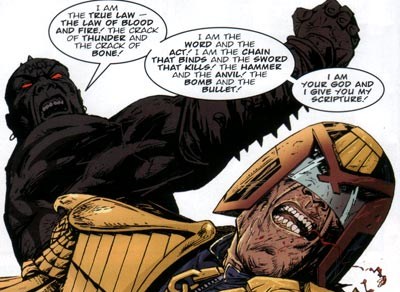Interviews
Published: Irish Times, July 31 2010“A comic book is only as strong as its weakest link. And some of our stories were very, very silly…”

PAT MILLS
Founder of 2000AD and ‘Godfather of British Comics’
You’re at the Comic-Con in San Diego. Could you tell us a bit about the scale of that event for people who haven’t heard about it?
It’s absolutely massive. Something in the region of 125,000 comic book fans have converged on downtown San Diego – you can barely move along the street there are so many people here. The street signs directing people to the conference centre are all in Klingon. So anyone who happens to be fluent in Klingon will have no trouble getting here. It’s dominated by Marvel and DC Comics, but I’m here to fly the flag for 2000AD. Comic book fans are notoriously territorial over their favourite characters. Do fans still give you a hard time for letting Sylvester Stallone take off his mask in the Judge Dredd film?
(groans) That question! As if we would have had any influence over that. As comic book creators, once you sign a film contract, you are at the bottom of the heap in terms of the impact you can have on a movie. But the fans can really be quite intense.
When you were dreaming up 2000AD and Judge Dredd back in the late 1970s, what was your vision for the comic?
Well, it was the same vision I have for it today, which is that comic books should strive always to be subversive. They should represent counterculture. If you think back to the very first episode of the Bash Street Kids in 1953, Leo Baxendale had his characters hijack a tank and take over a police station. There’s that great cliché of teachers confiscating comic books from children, and it’s true, because teachers identified comics – rightly, in my opinion – as a source of challenge to their authority.
Like most sci-fi stories, Judge Dredd purports to explore adult issues such as authoritarianism and the rule of law. But it’s also packed with futuristic gadgets, outlandish characters and enormous explosions.
(laughs) That’s true, yes.
For the average comic book fan, which is the red meat and which is the salad?
That’s a very interesting point. There’s always a danger with fantasy characters that the audience, and even the authors, will fall in love with the wrapping paper rather than what’s inside. There was a time, towards the end of the Thatcher era, when it was possible to do an explicitly political comic. We did one called Crisis – which had stories about Apartheid and Amnesty International – and it was financially viable for a time. My personal view is that ordinary people are actually the most exciting heroes and real life is far more exciting than life on a galaxy far, far away. It’s not a view shared by many of my peers, unfortunately.
The American graphic novelist Joe Sacco has done some incredible work on real-life wars in books like Palestine and Safe Area Goražde.
Yes, Joe Sacco is really getting out there and doing those stories. He’s fortunate in that he isn’t just an artist and writer, he’s also a journalist. He actually does location work. I think what he’s doing is really admirable.
You’re taking part in a panel discussion at Electric Picnic this year. What will you be discussing?
It’s going to be about comic books and one of the other panellists will be Dr. Mel Gibson – which is a very easy name to remember! She’ll be talking about female comics.
I’ve never been into sci-fi. But I had three sisters growing up, so I would actually be much better acquainted with girls comic. You were involved in those too, weren’t you?
It’s funny, a lot of male readers would say the same thing because, at their peak, girls comics sold significantly better than boys. There was Judy, Mandy and Bunty – they all had to have a “y” on the end for some reason. One of my favourites one we did was Misty…
Oh, I remember that. She used to scare the living [expletive] out of me!
That’s right. She had telekinetic powers, rather like Carrie. It was all very dark and visceral. But of course, a comic book is only as strong as its weakest link and some of the stories were very, very silly.
Finally, which was the silliest story you ever published?
(laughs) Probably one that used to appear in Bunty called Penny’s Pogo Stick. It was about a girl whose father is a famous rocket scientist during World War II. He hides his secret plans in her pogo stick and she has to pogo-stick her way across occupied Europe. She’s picked up in France eventually by a Lysander aircraft, but unfortunately the airplane has a missing strut – so the pogo stick comes to the rescue! Obviously, it’s a ludicrous story. But it’s so bizarre and so innocent that I think it has a certain charm.
Pat Mills will be at MindField at this year’s Electric Picnic festival, September 3rd to 5th
